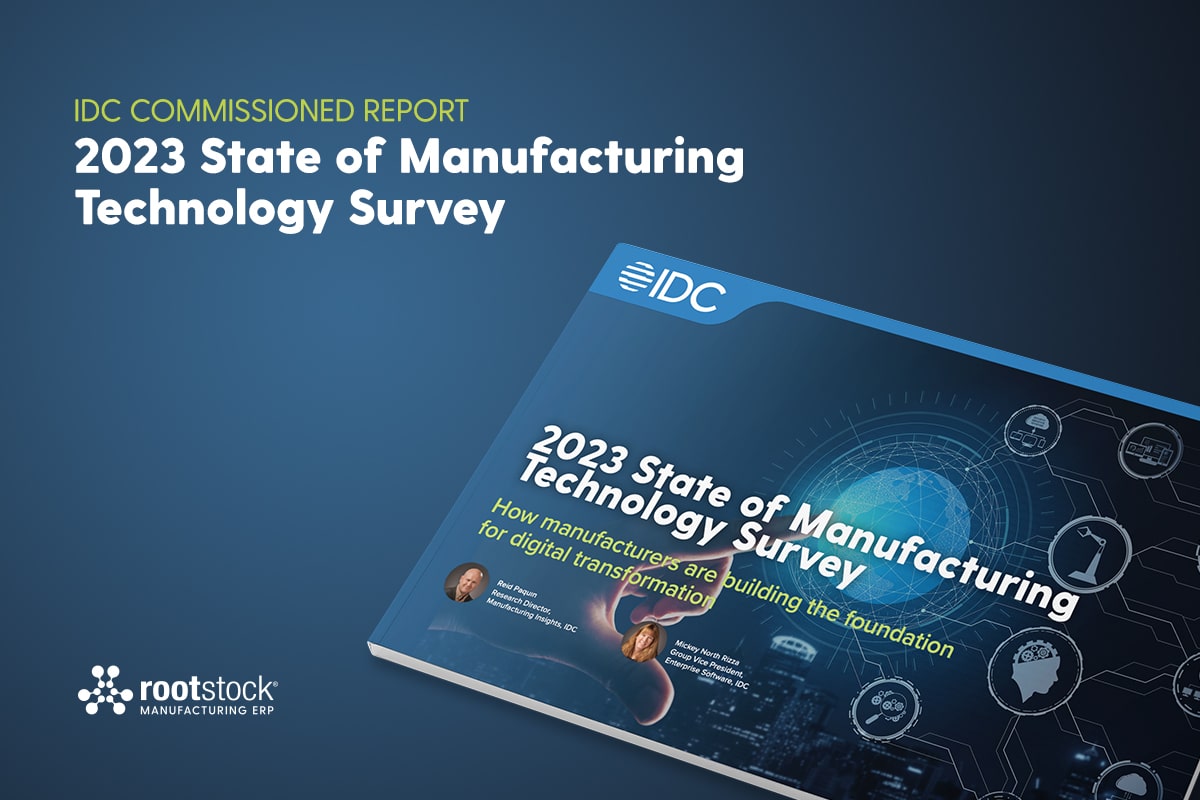Manufacturing is thriving. According to Axios, 800,000 new jobs have been added in the U.S. since President Biden took office, and spending on new manufacturing factories is triple the average rate seen back in the 2010s.
But when it comes to representation of women, the industry is still lagging. The Manufacturers Alliance Foundation reports that women make up less than one third of manufacturing roles despite making up nearly half of the overall workforce, and only 12% hold C-suite positions.
Rootstock Software recognizes the importance of women in the field and wants to encourage more women to not only pursue careers in the industry, but also step into more leadership roles. To help create that support, we hosted our first Women in Manufacturing Panel & Networking Luncheon in Cincinnati and plan to hold more of these events in the future.
The panel featured trailblazing female executives, including:
- Caroline Santander, Sr. Vice President, Global Professional Services & Enablement, Rootstock Software
- Amy Armstrong, Area Vice President, Salesforce
- Stephanie Sult, Senior Manager, Solutions Engineering, Salesforce
- Kimberly Carroll, Executive Director of Marketing, Makino
In addition, the Women in Manufacturing (WiM) Ohio Chapter helped to promote the event to their regional members and sent a representative to also attend.
The panelists had an open discussion about their challenges and successes in the field, and they touched on various topics. Here are three key highlights from their conversation:
Women Help to Foster a Positive Company Culture
When the panelists were asked what unique perspective they brought to their roles which inspired change, they largely agreed it was their ability to be vulnerable and to nurture empathy in the workplace. This has had a significant impact on their respective company cultures.
One way to introduce vulnerability is to invite feedback. For example, one panelist will often share a weakness or challenge with her colleagues, asking them for advice on how she can improve. Her workmates then feel comfortable doing the same, and as a result, she’s seen significant growth among her team.
Another panelist will ask her peers questions to help them arrive at their own solutions, or will ask how they may be feeling about a project. Surprisingly, she found that emotional understanding and acknowledgement can open doors to problem-solve in different ways—and in many cases, it may get to the root of an issue faster.
When trying to drive change, temperament and intention also matter. One panelist said she strives to set a positive tone that’s creative and solution-oriented, rather than a negative one that tends toward complaint and dissatisfaction. When her team starts to move in a bleak direction, she has ways to quickly shift back to a more optimistic mode.
Change Management Starts with Trust and Transparency
Change is difficult, so when the panelists were asked how they effectively manage it in their organizations, they agreed it must start with building genuine relationships, which in turn, requires trust and transparency.
One panelist strives to be clear about her core values, while also learning about the principles her colleagues hold dear. In this environment, each person knows what drives the other, and they can anticipate and understand how each will respond.
Another way of building trust is serving as a neutral party between different departments and personalities. By serving as this type of impartial mediator, one panelist quickly garnered buy-in from all sides. Many others have now followed her example, helping to drive change in different ways throughout her organization.
Communication is also a required staple. As one panelist shared, open lines help boost morale. If employees aren’t aware of what’s going on, they won’t feel like they’re a valued part of the organization.
The panelists agreed that these are key attributes of women leaders; they’re great at sharing information and communicating key details. As a result, having more women in leadership roles will help build the bridge between top-level executives and the rest of the organization.
Building a Blueprint for AI
In manufacturing, AI is a hot topic on everyone’s minds. For all the panelists, there had been many internal company discussions about AI in recent months.
Manufacturing is on the digital transformation fast track, and a lot of companies are excited to adopt AI. But everyone agreed that the industry needs to assess where it can get the most value from AI in terms of cost savings, automation, and improved decisioning.
There’s an urgent need to build a blueprint for AI, so manufacturers can leverage it for their specific industry needs and use cases.
Companies, like Rootstock Software, have started to develop the groundwork—first building a data foundation that supports business intelligence, and from there, we’ll have the basis to bring together other predictive AI capabilities tailored for manufacturing.
The Future of Women in Manufacturing
Our inaugural Women in Manufacturing event highlighted critical insights, and we’ll continue to bring up issues that resonate across the industry.
From the significant impact women can have in fostering a positive company culture, to the importance of trust and transparency in managing change, the panelists’ experiences and perspectives offered invaluable insights. The discussion also underscored the exciting potential and much-needed groundwork for AI in manufacturing.
Rootstock’s commitment to empowering women in manufacturing is unwavering, and we are thrilled to continue this vital conversation. Our next event, the “Women in ERP Breakfast” will be held on Wed, Nov. 8, 7:30 – 8:30 am CT, where we will continue to explore, celebrate, and promote the essential role of women in the manufacturing industry. This breakfast is part of our Rooted-In Manufacturing Conference in New Orleans, Nov. 6-8. Be sure to check out the entire agenda and register for this must-attend industry conference.






